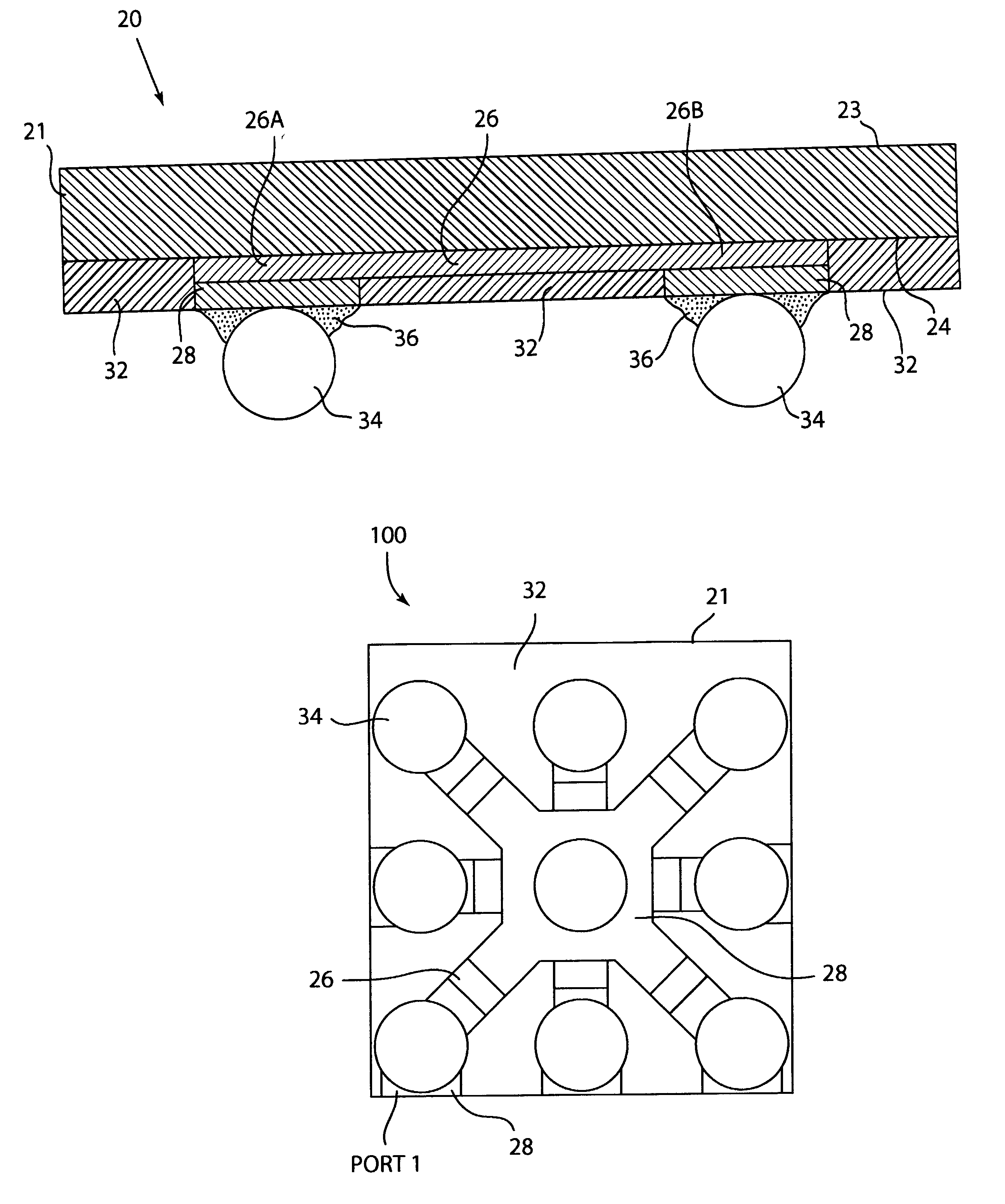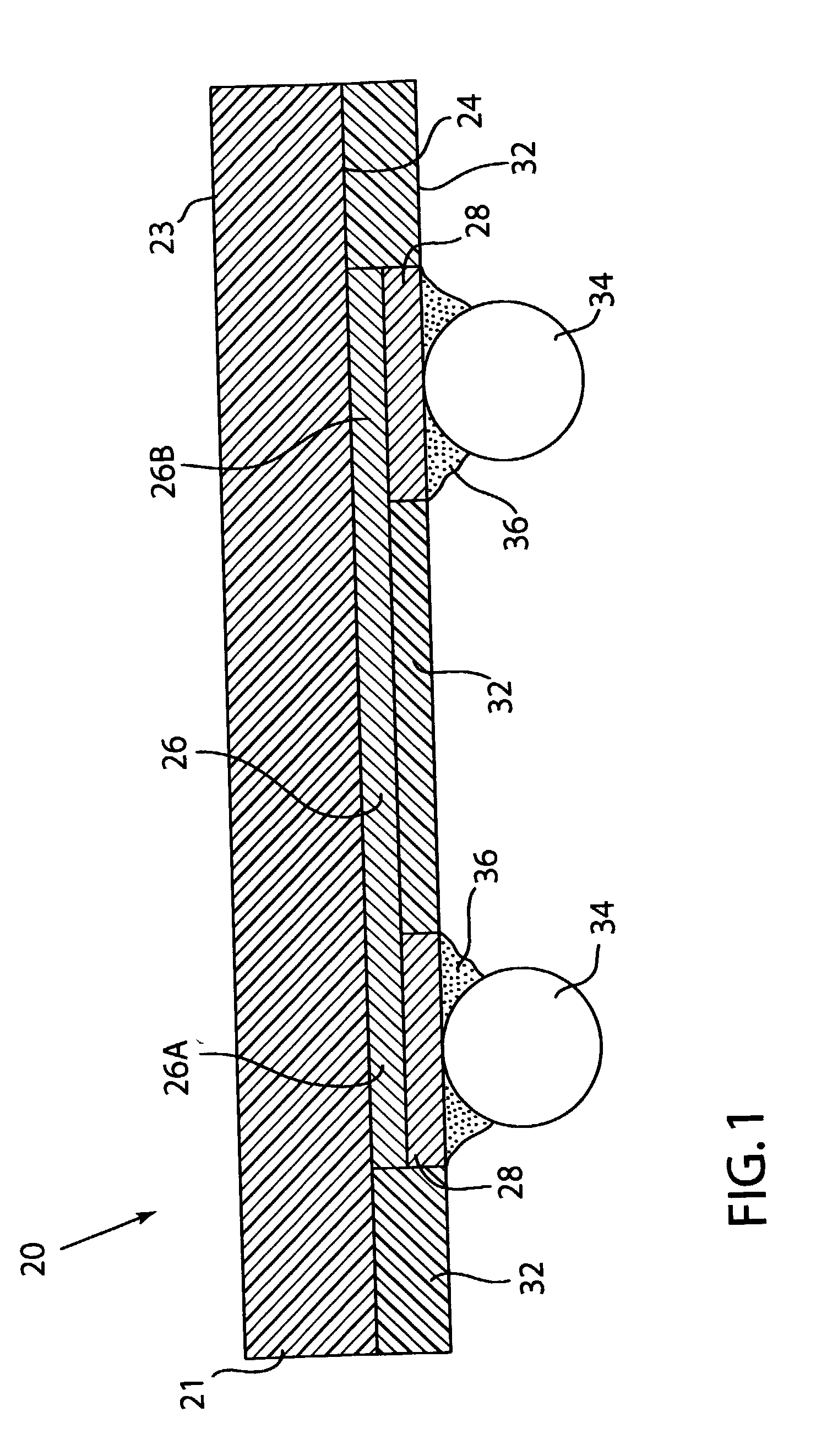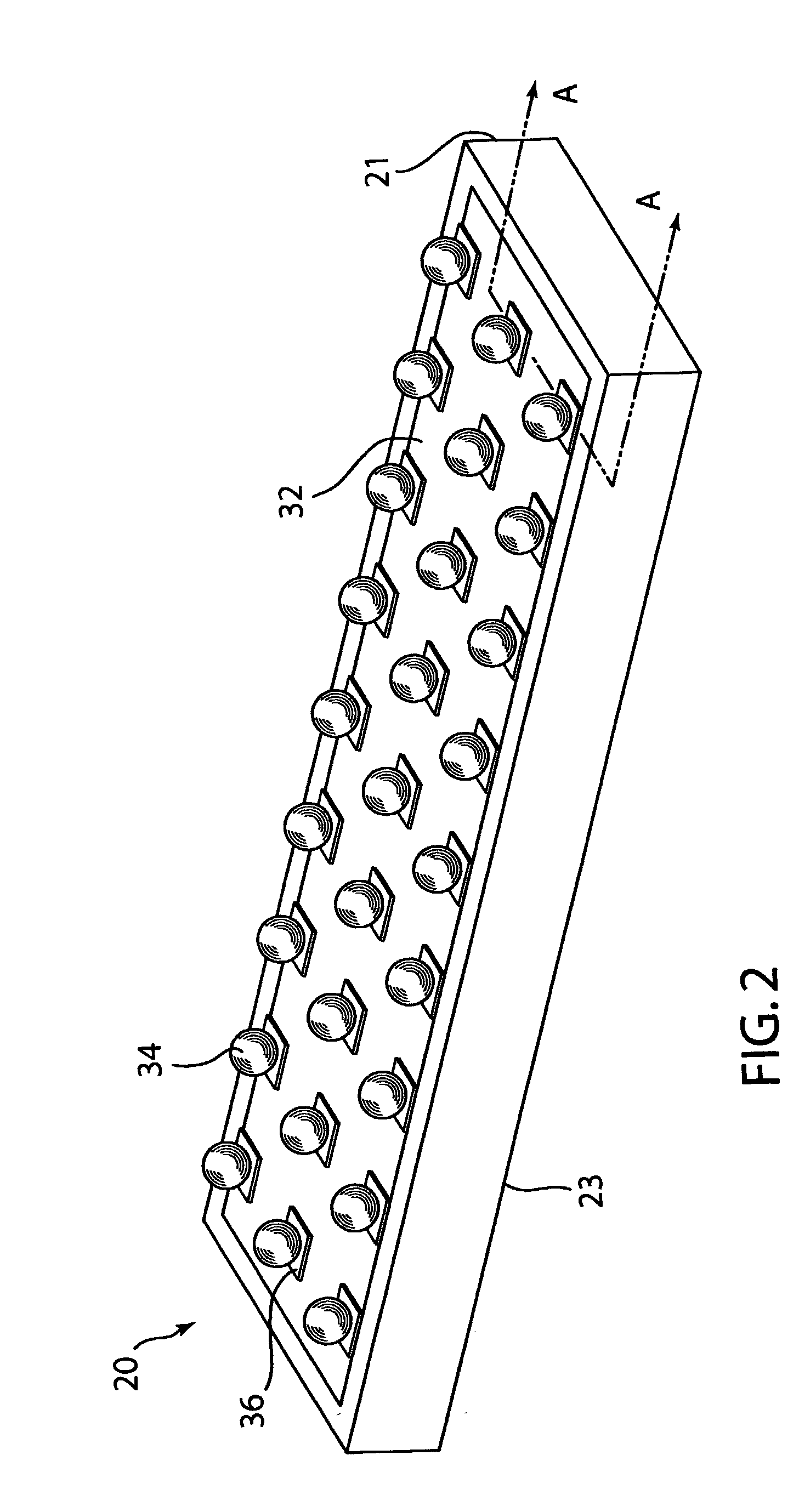Ball grid array resistor network
a resistor network and array technology, applied in the direction of resistor details, resistive material coating, non-metallic protective coating application, etc., can solve the problems of loss of signal high frequency components, affecting the transmission of high frequency signals, and progressively worsening of signal transmission
- Summary
- Abstract
- Description
- Claims
- Application Information
AI Technical Summary
Problems solved by technology
Method used
Image
Examples
Embodiment Construction
[0039] Referring to FIGS. 1 and 2, a Ball Grid Array Resistor Network (BGA) 20 is shown. Network 20 has a planar substrate or printed wiring board 21 formed from an organic polymer material. Substrate 21 has a top surface 23 and a bottom surface 24. Substrate 21 can be formed from various organic materials such as FR4, Polyimide and other insulative dielectrics.
[0040] Printed wiring board 21 includes a non-conductive substrate and copper traces. The non-conductive substrate is preferably a composite material, for example, epoxy-glass, phenolic-paper, or polyester-glass; and typical composites used in circuit board manufacturing include polyimides for flexible circuitry or high-temperature applications; paper / phenolic which can be readily punched: National Electrical Manufacturers Association (NEMA) grade FR-2; paper / epoxy which has better mechanical properties than the paper / phenolic: NEMA grade FR-3; glass / epoxy and woven glass fabric which have good mechanical properties: NEMA gra...
PUM
 Login to View More
Login to View More Abstract
Description
Claims
Application Information
 Login to View More
Login to View More - R&D
- Intellectual Property
- Life Sciences
- Materials
- Tech Scout
- Unparalleled Data Quality
- Higher Quality Content
- 60% Fewer Hallucinations
Browse by: Latest US Patents, China's latest patents, Technical Efficacy Thesaurus, Application Domain, Technology Topic, Popular Technical Reports.
© 2025 PatSnap. All rights reserved.Legal|Privacy policy|Modern Slavery Act Transparency Statement|Sitemap|About US| Contact US: help@patsnap.com



